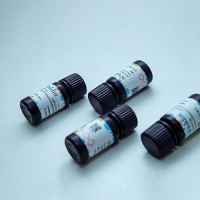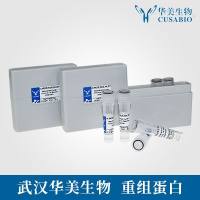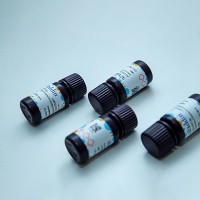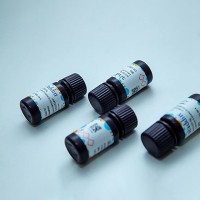Oligodeoxynucleotide Containing S‐Functionalized 2′‐Deoxy‐6‐Thioguanosine: Facile Tools for Base‐Selective and Site‐Specific Internal Modification of
互联网
- Abstract
- Table of Contents
- Materials
- Figures
- Literature Cited
Abstract
Chemically modified oligonucleotides play a significant role for genomic research. Modified nucleosides, such as with a fluorescent dye, can be obtained by chemical synthesis. Site?specifically modified long nucleic acids are obtained by ligation of chemically modified short oligonucleotides with enzyme, photochemistry, or catalytic DNA. The functionality?transfer ODN (FT?ODN), which contains 2??deoxy?6?thioguanosine (6?thio?dG) functionalized with the 2?methyliden?1,3?diketone group, is hybridized with the target RNA to trigger the selective functionalization of the 4?amino group of the cytosine base at pH 7 or the 2?amino group of the guanine base at pH 9.4 or at pH 7.4 in the presence of NiCl2 . In particular, the functionality?transfer reaction (FTR) under the alkaline conditions or neutral conditions in the presence of NiCl2 proceeds rapidly and selectively to lead to the modification of the target guanine. The transfer reaction of the acetylene?containing diketone group produces the acetylene?modified RNA, which can be subjected to the Cu(I)?catalyzed ?click chemistry? with a variety of azide compounds for highly specific, internal modification of RNA. Curr. Protoc. Nucleic Acid Chem. 48:4.49.1?4.49.16. © 2012 by John Wiley & Sons, Inc.
Keywords: 2??deoxy?6?thioguanosine; RNA modification; functionality transfer; click chemistry
Table of Contents
- Introduction
- Basic Protocol 1: Preparation of Dimethoxytrityl‐Protected Phophoramidite of S‐Protected 2′‐Deoxy‐6‐Thioguanosine from 2′‐Deoxyguanosine
- Basic Protocol 2: Preparation of 3‐Chloromethylene‐4‐Phenylbutane‐2,4‐Dione
- Basic Protocol 3: Preparation of 2′‐Deoxy‐6‐Thioguanosine Containing Oligodeoxynucleotides and Its Functionalization with 3‐Chloromethylene‐4‐Phenylbutane‐2,4‐Dione
- Commentary
- Literature Cited
- Figures
Materials
Basic Protocol 1: Preparation of Dimethoxytrityl‐Protected Phophoramidite of S‐Protected 2′‐Deoxy‐6‐Thioguanosine from 2′‐Deoxyguanosine
Materials
Basic Protocol 2: Preparation of 3‐Chloromethylene‐4‐Phenylbutane‐2,4‐Dione
Materials
Basic Protocol 3: Preparation of 2′‐Deoxy‐6‐Thioguanosine Containing Oligodeoxynucleotides and Its Functionalization with 3‐Chloromethylene‐4‐Phenylbutane‐2,4‐Dione
Materials
|
Figures
-

Figure 4.49.1 The nitrosyl group transfer from 2′‐deoxy‐6‐thioguanosine (S.1 ) to the 4‐amino group of cytosine (S.3 ). View Image -

Figure 4.49.2 The functionality transfer reaction of 1,3‐diketone derivative from 2′‐deoxy‐6‐thioguanosine (S.6 ) to the 4‐amino group of cytosine (S.8 ) at pH 7.0. The transfer reaction takes place selectively to the 2‐amino group of guanine (S.9 ) at pH 9.6 or at pH 7.4 in the presence of NiCl2 . View Image -

Figure 4.49.3 Functionality transfer reaction leading to the internal RNA modification. The acetylene group of the modified RNA (S.11 ) is useful as a scaffold for labeling with a variety of molecules (S.12 ) through the “click chemistry” View Image -

Figure 4.49.4 Odorless synthesis of the 2′‐deoxy‐6‐thioguanosine derivative and its phosphoroamidite (S.15 ). View Image -

Figure 4.49.5 The synthesis of the transfer units S.17 and S.19 . View Image -

Figure 4.49.6 Preparation of the functionalized ODN2 and change of HPLC profile. View Image -

Figure 4.49.7 Functionality transfer reaction by ODN2 to modify 4‐amino group of the target cytosine at pH 7.0 or to modify 2‐amino group of the target guanine at pH 9.4. Time course of the yields of RNA4a (on the hour time‐scale) and RNA6b (on the minute time‐scale) were obtained by following the reaction by HPLC. View Image -

Figure 4.49.8 Cu(I)‐catalyzed “click chemistry” between the modified RNA and the azide compound produces the internally modified RNA7 . The HPLC chart represents the change of the reaction with the azide derivative of biotin. View Image
Videos
Literature Cited
| Literature Cited | |
| Ali, M.M., Alam, M.R., Kawasaki, T., Nakayama, S., Nagatsugi, F., and Sasaki, S. 2004. Sequence‐ and base‐specific delivery of nitric oxide to cytidine and 5‐methylcytidine leading to efficient deamination. J. Am. Chem. Soc. 126:8864‐8865. | |
| Austin, W.B., Bilow, N., Kelleghan, W.J., and Lau, K.S. 1981. Facile synthesis of ethynylated benzoic acid derivatives and aromatic compounds via ethynyltrimethylsilanet. J. Org. Chem. 46:2280‐2286. | |
| Baum, D.A. and Silverman, S.K. 2007. Deoxyribozyme‐catalyzed labeling of RNA. Angew. Chem. Int. Ed. 46:3502‐3504. | |
| Chow, C.S., Mahto, S.K., and Lamichhane, T.N. 2008. Combined approaches to site‐specific modification of RNA. ACS Chem. Biol. 3:30‐37. | |
| Herdewijn, P. (ed.) 2008. Modified Nucleosides in Biochemistry, Biotechnology and Medicine. WILEY‐VCH Verlag GmbH & Co. KGaA, Weinheim. | |
| Jao, C.Y. and Salic, A. 2008. Exploring RNA transcription and turnover in vivo by using click chemistry. Proc. Natl. Acad. Sci. U.S.A. 105:15779‐15784. | |
| Liu, J. and Taylor, J.S. 1998. Template‐directed photoligation of oligodeoxyribonucleotides via 4‐thiothymidine. Nucleic Acids Res. 26:3300‐3304. | |
| Ogino, M., Taya, Y., and Fujimoto, K. 2008. Highly selective detection of 5‐methylcytosine using photochemical ligation. Chem. Commun. 45:5996‐5998. | |
| Onizuka, K., Taniguchi, Y., and Sasaki, S. 2007. Development of novel thioguanosine analogs with the ability of specific modification of cytidine. Nucleic Acids Symp. Series 51:5‐6. | |
| Onizuka, K, Taniguchi, Y., and Sasaki, S. 2009a. A New odorless procedure for the synthesis of 2′deoxy‐6‐thioguanosine and its incorporation into oligonucleotides. Nucleosides Nucleotides Nucleic Acids 28:752‐760. | |
| Onizuka, K., Taniguchi, Y., and Sasaki, S. 2009b. Site‐specific covalent modification of nucleic acids guided by functionality‐transfer oligodeoxynucleotides. Bioconjug. Chem. 20:799‐803. | |
| Onizuka, K., Taniguchi, Y., and Sasaki, S. 2010a. A new usage of functionalized oligodeoxynucleotide probe for site‐specific modification of a guanine base within RNA. Nucleic Acids Res. 38:1760‐1766. | |
| Onizuka, K., Taniguchi, Y., and Sasaki, S. 2010b. Activation and alteration of base selectivity by metal cations in the functionality‐transfer reaction for RNA modification. Bioconjug. Chem. 21:1508‐1512. | |
| Onizuka, K., Shibata, A., Taniguchi, Y., and Sasaki, S. 2011. Pin‐point chemical modification of RNA with diverse molecules through the functionality transfer reaction and copper‐catalyzed azide‐alkyne cycloaddition reaction. Chem. Comm. 47:5004‐5006. | |
| Pasternak, A. and Wengel, J. 2011. Unlocked nucleic acid‐an RNA modification with broad potential. Org. Biomol. Chem. 9:3591‐3597. | |
| Sasaki, S., Onizuka, K., and Taniguchi, Y. 2011. The oligodeoxynucleotide probes for the site‐specific modification of RNA. Chem. Soc. Rev. DOI: 10.1039/c1cs15066a. |







